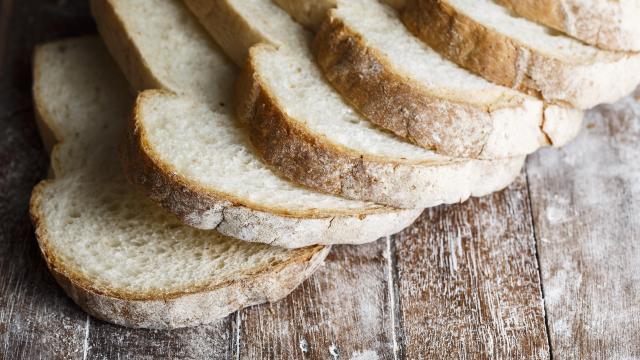Welcome back to The Grown-Up Kitchen, a segment of Skillet devoted to answering basic kitchen questions. Not every voting-age adult is comfortable slingin’ steaks or even heating their frozen pizza. (My stepfather insists he’s never been able to microwave popcorn without burning it.) From basic cooking skills to gadget functions, food storage, and knife care, I’m here to help you feed yourself like a whole grown-up.
This instalment covers the simple, but important, issue of storing bread. (You know, so you can save yourself from gagging when you discover the blue-green muppet of mould in your bag of bread.)
Storing bread isn’t a one-size-fits-all method, you have to consider your usage and the type of bread you like to eat. I think everyone has a “bread personality,” and knowing yours can help you store bread more effectively. You have to consider how frequently you carve a slice. Are you a daily bread eater, weekender, or do you get the occasional hankering? Do you only keep store-bought sliced loaves around, or do you buy that rectangular seed bread that always seems humid? There are three possible storage spaces for your bread, each suited to a different personality: the countertop, the fridge, and the freezer.
Store it on the counter
Countertop storage is ideal for everyday eaters, and is best for breads that are on the dry side. Storing on the counter, in a bag or in a bread box, allows you easy access to grab a slice, and it’s already at room temperature, which means you can chow down immediately, or the toasting time will be relatively quick.
Dry or crusty breads, like rolls, or a ciabatta loaf, will store better at room temperature than a moist bread. Bagged English muffins, an olive-studded boule, or a Mestemacher seed bread have a high moisture content, and the extra moisture held in the plastic bag, especially if you live in a humid climate, can be a spa day for bread mould. A temperature range of 60-80°F doesn’t inhibit fungal growth. In fact, fungi enjoy living at the temperatures we do, so plan on finishing that loaf in three to five days. Households of two or more everyday bread eaters will likely have no problem with countertop storage. If you’re on the fence, read on.
Store it in the fridge
Fridge storage might be the “this one’s just right” version for most folks. It can work for daily bread consumers and rare bread eaters alike, but it’s perfect for those who want an egg sandwich maybe twice a week. The spores that love bread are not interested in growing under those 35-40°F conditions, humid or not. Regardless of the type of bread, you can drastically extend the life of your loaf to a possible two weeks. Despite the chilly conditions, the bread remains flexible, so you can easily cut off a few hunks of sourdough, or split an English muffin with ease. (This is not the case with whole frozen loaves.) Keep in mind, where you might be able to store your bread in a paper bag on the countertop, take care to keep the bread wrapped in plastic if you’re keeping it in the fridge for a while. Long-term storage can lead to moisture loss, stale bread, and inferior flavour.
Store it in the freezer
Don’t fancy yourself a carb-lover, but occasionally need a tortilla? Keep your breads in the freezer. Breads keep astoundingly well in the deep-freeze, some last up to six months, and they thaw to like-new conditions. Seriously, it’s like the bread was born again. It’s one of the reasons the frozen food aisle is filled with bread-based products, they reheat phenomenally. In fact, your supermarket bakery is probably freezing bread too.
Regardless of the type of bread, cranberry walnut loaves or baguettes are all welcome, and carbs with high or low water contents will fare equally fine in the freezer. The only annoying thing is that when you want a slice, it’ll be frozen. That makes cutting it an issue. The best way to handle this problem is to put the work in before you freeze it. Slice the loaf first. Split the English muffins, bagels, biscuits, and rolls. Wrap them well in plastic (moisture loss happens in the freezer too), and put them in the freezer.
When the carb craving hits, grab a couple pieces. They’ll pop apart with a pull, or you can grab a butter knife to wedge them apart. Toast them as usual with an added minute or two. Enjoy your new, grown-up way of storing bread. You’ll waste fewer loaves, save some money, and always have “fresh” bread when you want it.

Leave a Reply
You must be logged in to post a comment.